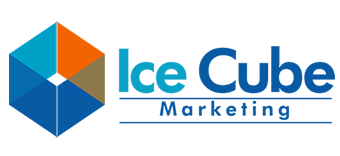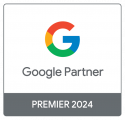Businesses, brands, and marketing specialists have either used them or come across them before – advertising clichés. A great many of them owe a big part of their existence to American Marketing (i.e. consumerism marketing).

Consumers have grown accustomed to clichés over the years and have associated them with “cheap salesman” tactics. They do not get the results they used to and end up ‘branding” a company as a low-quality provider of a certain good or service.
This, however, does not mean that all clichés should be avoided at all costs- just the ones that have been used to the point that people actually feel uncomfortable listening to them.
They are still frequently used because advertisers are “stuck” and cannot come up with the copy for an ad campaign, but clichés are counter-productive and squanders your marketing dollars; you are better off not running any campaign.
7 Ad Clichés Your Brand/Business Should Avoid At All Costs
Here are 7 of them to avoid:
1 – The Best abc company: Every business thinks that their business is the best. Guess what? Saying so doesn’t make it so, at least not in the minds of your targeted audience. This term has been used tirelessly throughout the years in all sorts of advertising campaigns, which has belittled its credibility.
Claude Hopkins, author of Scientific Advertising, heavily warns against use of such cliché, saying that the repercussions endure the entire sales message. Once you boast yourself, your audiences essentially ignore whatever you say next and deem everything as untrue.
Other variations of this cliché includes: The top xx , The world’s leading xx.
The only way a business can prove to its audience, beyond a shadow of a doubt, is to back it up with tangible facts like awards, 5-star reviews, and testimonials. Even then, using the cliché, “the best” is a surefire way to put off prospects and current customers. Instead, it is better to display your credentials from third-party sources like the ones listed above. Showcase what others have said about your product or service, let the customer try it, and then let them proclaim, “the best”!
2 – One Stop Shop; This cliché offers no value to your customer at all. It offered a value proposition back in the late 1920’s when automotive shops started to incorporate this form of service (full-vehicle repair) in one place but since the 90’s has not made any headway in advertising campaigns as more people look to niche-specific products and services to fulfill their needs.
As the saying goes, if you stand for everything, you stand for nothing. The use of this cliché causes customers perceive you as being desperate to take any business.
Even if your brand is a one-stop-shop, think of how you can use unique phrasing in your advertising to emphasize your specialty. Below are some examples of slogans created by “huge” brands that offer a broad range of products to emphasize their uniqueness:
Walmart: Save Money. Live Better.
Amazon: Everything Store Where People Come To Discover Anything They Want.
Target: Expect More. Pay Less.
3 – New and Improved: Another numbing ad cliché signifying that what customers bought before was old and faulty. To avoid the negative connotation associated with this annoying cliché, simply display the new features that have been added to your product or service. This way, customers who bought from you in the past will still feel that what they bought was good but now with the newly added features, it just might even be better.
4 – Great Customer Service: Why wouldn’t you offer great customer service? This is a no-brainer that does not need to be stated. We call it the ‘hygiene factor’ wherein great customer service should be a given. If it needs to be stated, why not simply promote what you provide the customer or client with in more specific details. For example, Zappos’ great customer service comes in the form of ‘paid free returns- no questions asked.’
Generic phrases such as these do not get people to buy or do they build trust. Customers want a solid product or service that solves their problems. List the solutions and benefits your product and service can provide them and that in and of itself is great customer service.
5 – Built From the Ground Up: Your customers don’t really care how the company was built, just that the products or services it provides does what the ad says it will do. Everyone is self-interested.
Instead of talking about how your company was built, talk about the value it can bring them. This is called a value-added proposition and is truly the only reason your customers buy from you in the first place. For example, we were able to turn around a failing ad campaign for a client just by avoiding this cliche. In this case study, we focused the message on the user instead of the founder and results drastically improved.
6 – The First 100 Callers (Fake Scarcity):
The first “any number” is a cheap sales tactic that used to work back in the 80’s but has worn out its welcome over time, not only because it has been used by every advertiser that cannot come up with a creative ad, but also because it is not true – whoever calls is going to get the deal, since it is already priced into the promotion.
Sure, all advertisers know about the psychology of scarcity and its ability to hasten a decision but this phrase has been used so much and for so long in advertising circles that people just do not believe them anymore. Besides being overused, Fake scarcity destroys trust between the brand and customer by “forcing” the sale, be it ever so cleverly.
Think about it, no one likes to be in a rush to buy. Consumers like to take their time and feel as if they found the product or service, not the other way around – being “pushed” into it. Even if they buy once due to this scarcity cliché, they are sure never to buy again because the buying experiencing was not a pleasant one.
If want to employ scarcity, make sure it’s real. Believable form of scarcity applies to event marketing(.i.e. 30 seats available), product ecommerce(.i.e. 30sets only) and limited time promotions.
7 – Are You Sick of Getting No Results: Of course they are and that is why they are viewing your ad. The first thing you want to do is make your audience feel good about discovering your service and product. The cliché, ‘“sick of getting no results?” is only going to remind them of their past failures and put them in a negative frame of mind.
Instead, use positive reframing terms like “results-oriented” or “get our clients needs met” to change their perspective and make them feel good about what you are selling.
Conclusion
As a brand or business who advertises or who employs advertisers to create and run their campaigns, your sole marketing duty is to provide your audience with ads that help them understand what your product or service is all about and how it can help them.
This can be achieved by using time-tested clichés, but not ones that are vague and have been used to “death”. Today’s customers are more informed than ever before due to the advent of the internet and the accessibility of the information it provides. Therefore, cheap, spammy, and salesy ad messages, no matter if they happened to work in the past, will not convince them to purchase from you.

Keep your brand in good standing by avoiding the above clichés and take the extra effort to understand your customers better, expand on your product benefits with clearer detail or come up with entirely new and unique ways to show the value of your products and services.










